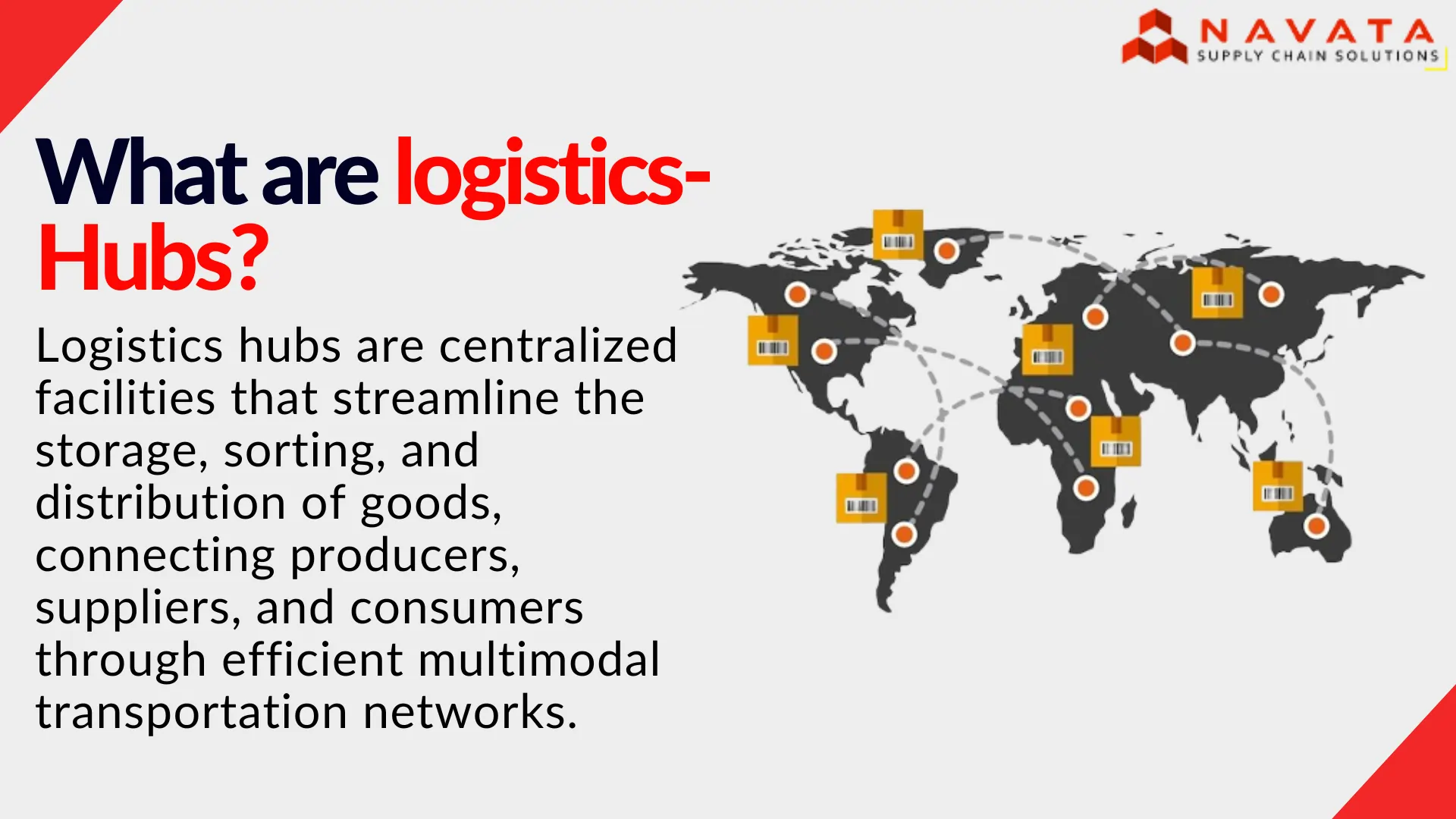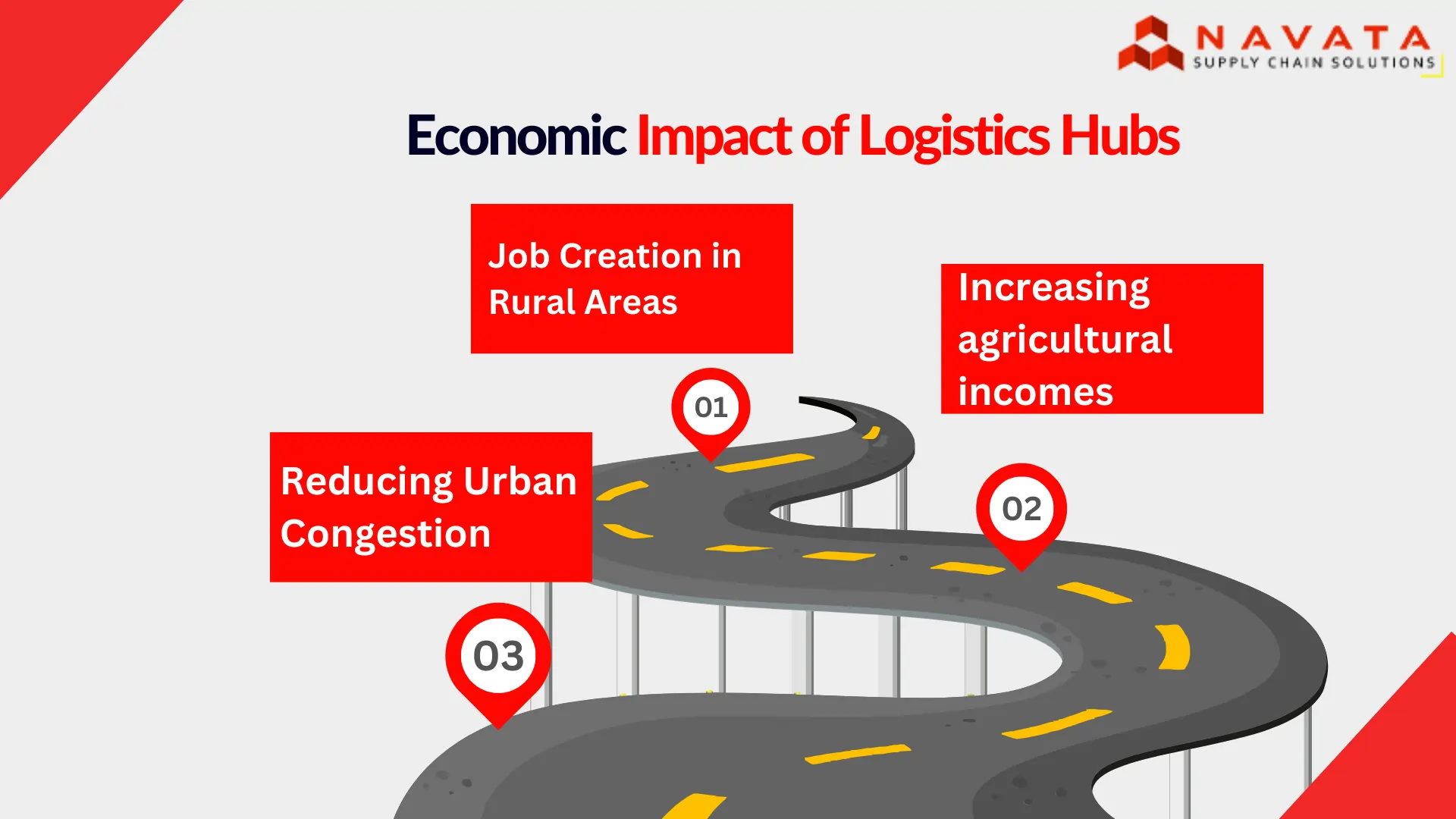Logistics Hubs Connecting Rural and Urban Markets
In today’s economy, logistics hubs serve as an essential link between rural production zones and urban consumption areas. They serve as the backbone of an integrated supply chain system, ensuring efficient product transportation, streamlining market accessibility, and contributing to long-term economic success.
Logistics hubs enable rural producers to reach larger markets by improving transportation, storage, and distribution operations while satisfying the expanding expectations of metropolitan customers. These hubs not only improve market connections, but they also encourage fair development by solving logistical inefficiencies, lowering costs, and encouraging interconnection between varied regions, resulting in a more balanced economy.

Logistics Hubs Bridging the Rural-Urban Gap
Connecting Rural Producers and Urban Consumers
Rural areas are wealthy in agricultural products and raw materials, which constitute the foundation of food supply networks and industrial inputs. These hubs serve as critical middlemen, supporting the rapid transfer of agricultural food to urban markets and dramatically lowering post-harvest losses. According to the Food and Agriculture Organization (FAO), India loses between 30 and 40% of its fresh output because of insufficient storage and poor transit.
These hubs with sophisticated storage and transportation facilities play an important role in reducing these losses by ensuring that perishable commodities arrive in good condition. Also, they guarantee a stable supply of raw materials to urban businesses, which is required for continuous production cycles, so benefiting both urban economies and rural communities.
Enabling Urban Goods to Reach Rural Markets
Urban centers serve as production hubs, supplying consumer durables, FMCG items, and technological equipment to a variety of markets. Logistics hubs simplify the delivery of these commodities, ensuring that they are supplied effectively from metropolitan manufacturers and warehouses to remote rural areas.
This link not only improves accessibility but also helps metropolitan businesses to grow into previously unexplored rural regions, where demand for goods is continuously increasing. Logistic hubs help to penetrate rural markets by facilitating the smooth movement of products, promoting economic inclusiveness, and expanding brand reach.
You May Also Like to Read: What is Fulfillment Center and How it works?
Looking For Reliable Logistics Solutions!
Multimodal Connectivity of Logistics-Hubs
The success of logistics hub is dependent on effective multimodal transportation systems that connect road, rail, river, and air networks. These integrated modes ensure that commodities are moved promptly and affordably, resulting in a streamlined supply chain capable of serving the different needs of rural and urban markets.
Rail-road connectivity
Rail and road networks are the backbones of freight movement, with rail serving long-distance transit and highways providing critical last-mile delivery. Logistics hub use both techniques in together to maximize efficiency. For example, India’s Dedicated Freight Corridors (DFC), which span 3,360 kilometers, are changing the transportation landscape by speeding up the transit of products. These corridors cut transit times and improve connectivity between rural producers and metropolitan markets.
Inland waterways
In areas with navigable rivers, inland waterways provide a cost-effective and environmentally friendly mode of transportation. Logistics hubs along these rivers facilitate the smooth transportation of commodities over great distances. India’s 111 National Waterways demonstrates the rising relevance of this method. Logistics hubs along these rivers contribute to lower transportation costs and environmental effects, making them an essential component of an efficient supply chain.
Air Cargo
Air transport, however more expensive, is crucial for carrying high-value and time-sensitive items. Logistics hubs linked to urban airports via road networks guarantee that perishable and luxury items arrive quickly and unharmed. This method is critical for linking rural areas to urban consumption centers, particularly for goods such as fresh produce, medications, and technology. Logistics hubs improve the dependability and reach of supply chains by integrating air freight.
You May Also Like to Read: What is Multimodal Shipping?
Economic Impact of Logistics Hubs
Logistics hub have a transformational impact on the economic growth of both urban and rural areas, particularly in developing countries. Their capacity to streamline supply chains and improve connections between rural and urban regions has a knock-on impact that benefits multiple stakeholders.
Job Creation
Logistics hubs serve as job creation engines, providing a variety of possibilities in storage, transportation, and technology-driven supply chain management. These centers boost local economies by generating employment in both skilled and unskilled industries. According to a World Bank analysis, improving logistics infrastructure may boost rural employment by up to 15%, emphasizing its critical role in economic development.
Increasing agricultural incomes
Logistics centers help rural farmers get fair pricing for their goods by simplifying shipping and avoiding delays. Improved access to urban markets allows farmers to obtain higher prices while reducing post-harvest losses. According to studies, farmers who are connected to effective logistical networks increase their revenue by 20-25%, considerably contributing to rural prosperity and eliminating economic inequality.
Reducing Urban Congestion
Logistics hubs strategically positioned outside of metropolitan regions serve to relieve congestion by combining commodities prior to ultimate delivery. This methodical technique reduces the number of cars entering city centers, resulting in less traffic congestion and reduced emissions. It also increases the efficiency of last-mile delivery, resulting in a more pleasant urban living experience.

Real-World Examples of Logistics Hubs
Logistics hubs worldwide play a pivotal role in fostering economic growth, improving connectivity, and ensuring seamless supply chain operations. Here are notable examples:
India: National Logistics Policy (NLP)
Launched in 2022, the National Logistics Policy aims to transform India’s logistics landscape by developing state-of-the-art logistics hubs. These hubs are critical to reducing logistics costs, which currently account for 13-14% of the GDP, making India less competitive globally.
some of the hubs are:
- New ICD Development in South Uttarakhand -MMLP Pantnagar
- New ICD Development in Raipur -MMLP Naya Raipur
- New ICD Development in Jharsuguda
- Phase II of Multi-Model Logistics Hub – Visakhapatnam P
Germany: Duisburg Intermodal Terminal
Located in the Ruhr region, the Duisburg Intermodal Terminal is one of Europe’s largest inland logistics hub. It connects rural areas to urban markets across Europe via rail and waterways, exemplifying efficient multimodal transport. The hub has become a vital node in China’s Belt and Road Initiative, facilitating trade between Asia and Europe.
USA: Chicago O’Hare Global Hub
Strategically positioned in the Midwest, Chicago O’Hare is a global logistics hub connecting agricultural producers from rural areas to urban consumers and international markets. The hub utilizes road, rail, and air connectivity to ensure swift and efficient transportation, making it indispensable for the U.S. logistics ecosystem.

Conclusion
Logistics hubs play an important role in bridging the rural-urban gap by improving connection, decreasing inefficiencies, and encouraging economic inclusion. They facilitate the flow of commodities between rural producers and urban consumers, increasing agricultural revenue, job development, and urban accessibility.
These hubs improve supply chains and promote long-term growth by combining multimodal transportation. Finally, logistics hubs help to create a more balanced and affluent economy, helping both rural and urban regions equally.
Thanks For Reading: How Logistics Hubs Connecting Rural and Urban Markets?
Powered By 360Presence

